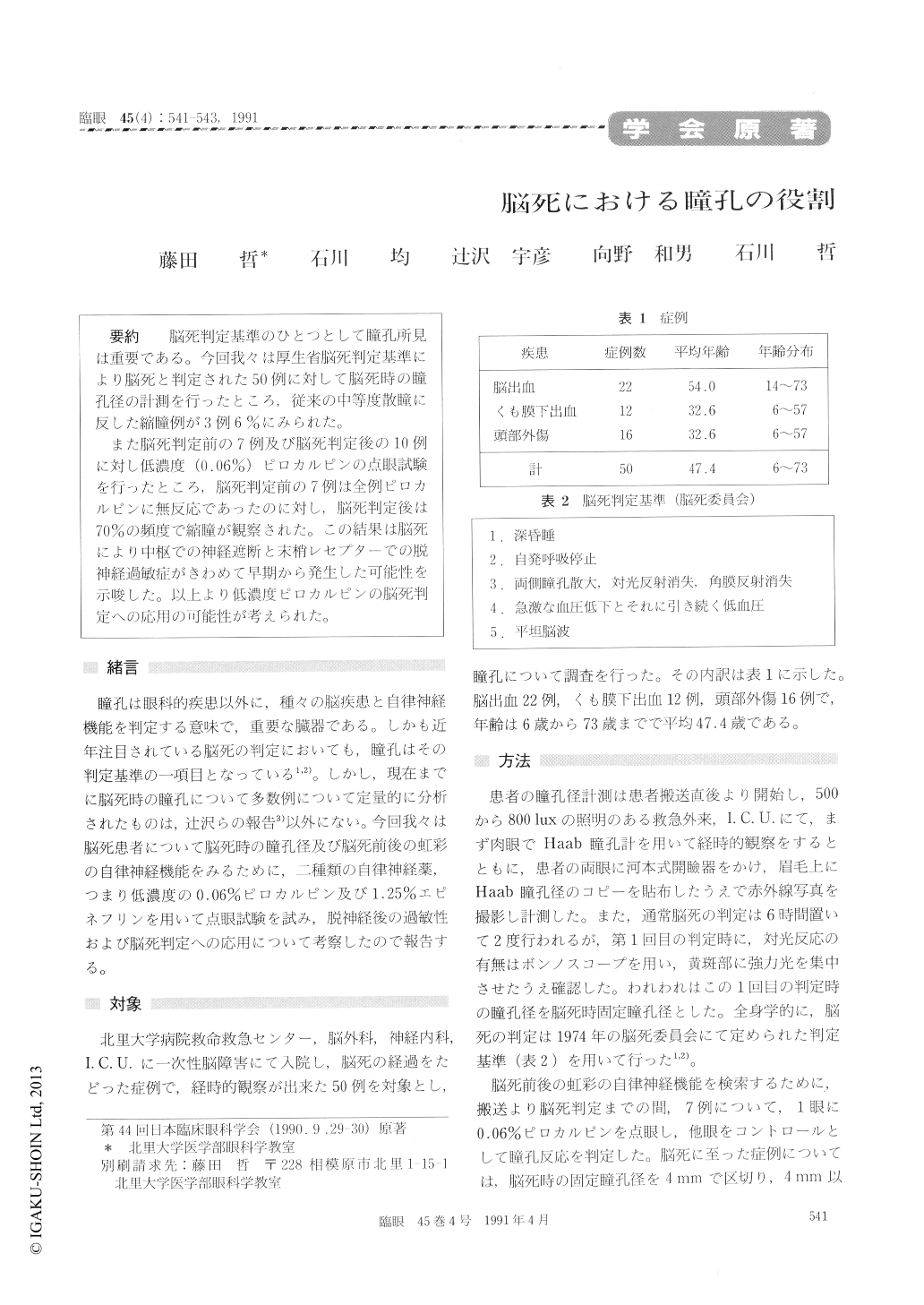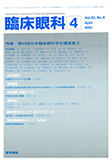Japanese
English
- 有料閲覧
- Abstract 文献概要
- 1ページ目 Look Inside
脳死判定基準のひとつとして瞳孔所見は重要である。今回我々は厚生省脳死判定基準により脳死と判定された50例に対して脳死時の瞳孔径の計測を行ったところ,従来の中等度散瞳に反した縮瞳例が3例6%にみられた。
また脳死判定前の7例及び脳死判定後の10例に対し低濃度(0.06%) ピロカルピンの点眼試験を行ったところ,脳死判定前の7例は全例ピロカルピンに無反応であったのに対し,脳死判定後は70%の頻度で縮瞳が観察されな,この結果は脳死により中枢での神経遮断と未梢レセプターでの脱神経過敏症がきわめて早期から発生した可能性を示唆した。以上より低濃度ピロカルピンの脳死判定への応用の可能性が考えられた。
The state of the pupil serves as one the indicators of brain death. We evaluated the pupil in 50 cases during the phase of brain death due to stroke, subarachnoid hemorrhage or trauma. The pupil diameter, an measured under illumination at 650 lux, ranged between 4 and 8 mm in 47 cases. We instilled 0.06% pilocarpine in 10 cases. No constric-tion of the pupil resulted before onset of brain death. Miosis, by an average of 41%, was induced in 7 cases, 70%, 21 hours after onset of brain death. In the absence of innervation after brain death, this reaction seemed to be due to cholinergic supersen-sitivity of the pupil. A rapid development of dener-vation supersensitivity seemed to be related to direct pathway from the brainstem to iris sphincter muscle. Three cases responded to 1.25% 1-epine-phrine instillation, suggesting loss of sympathetic innervation. Instillation of low-concentration pilocarpine seemed to be of value in determination of brain death.

Copyright © 1991, Igaku-Shoin Ltd. All rights reserved.


